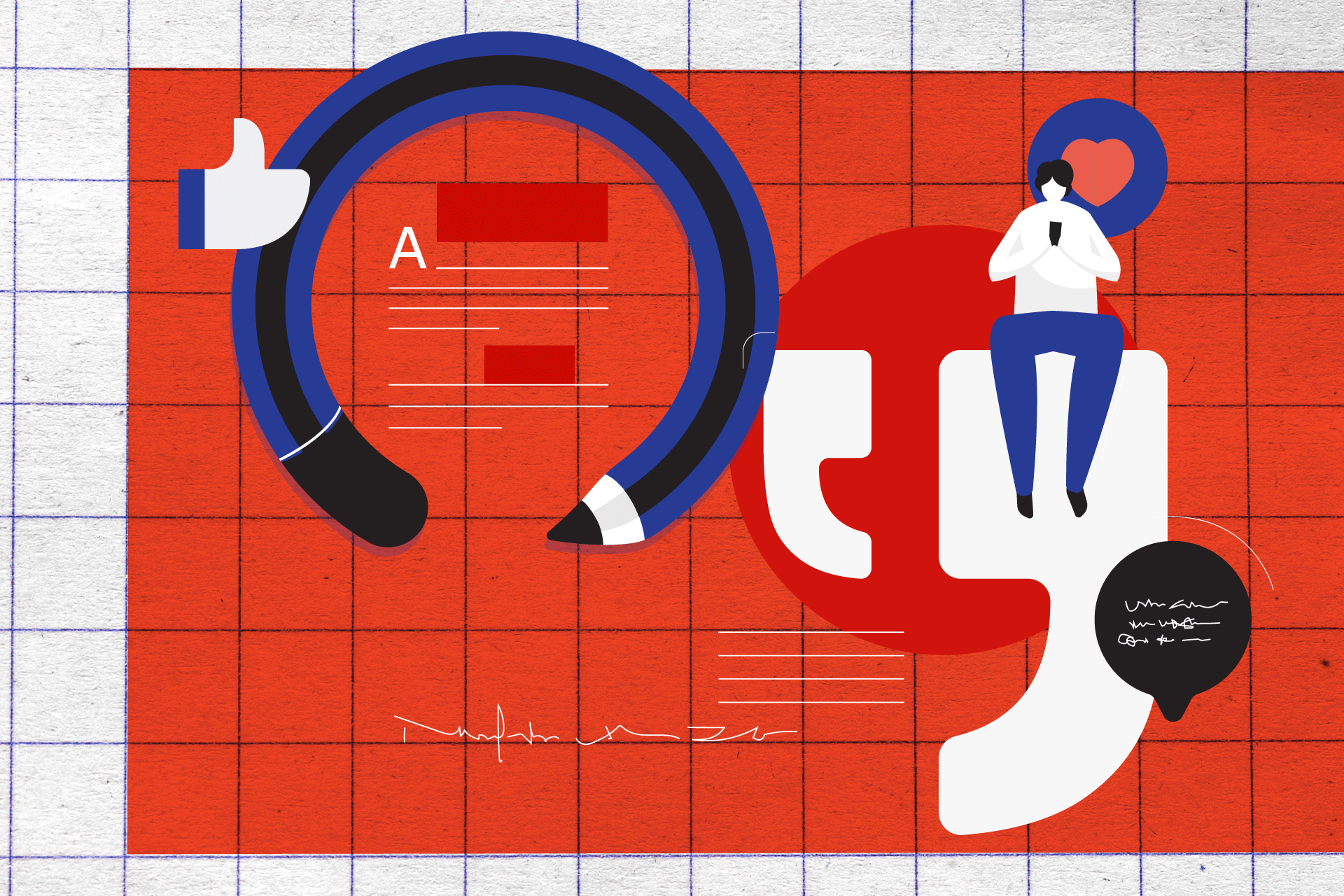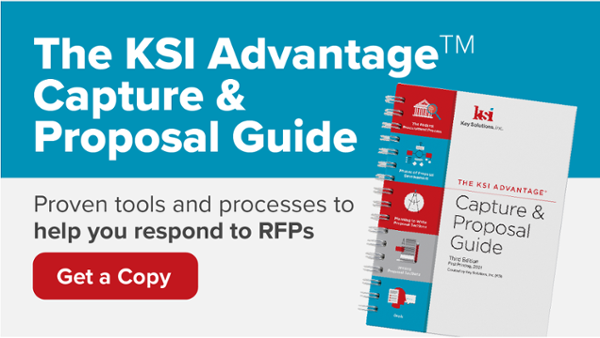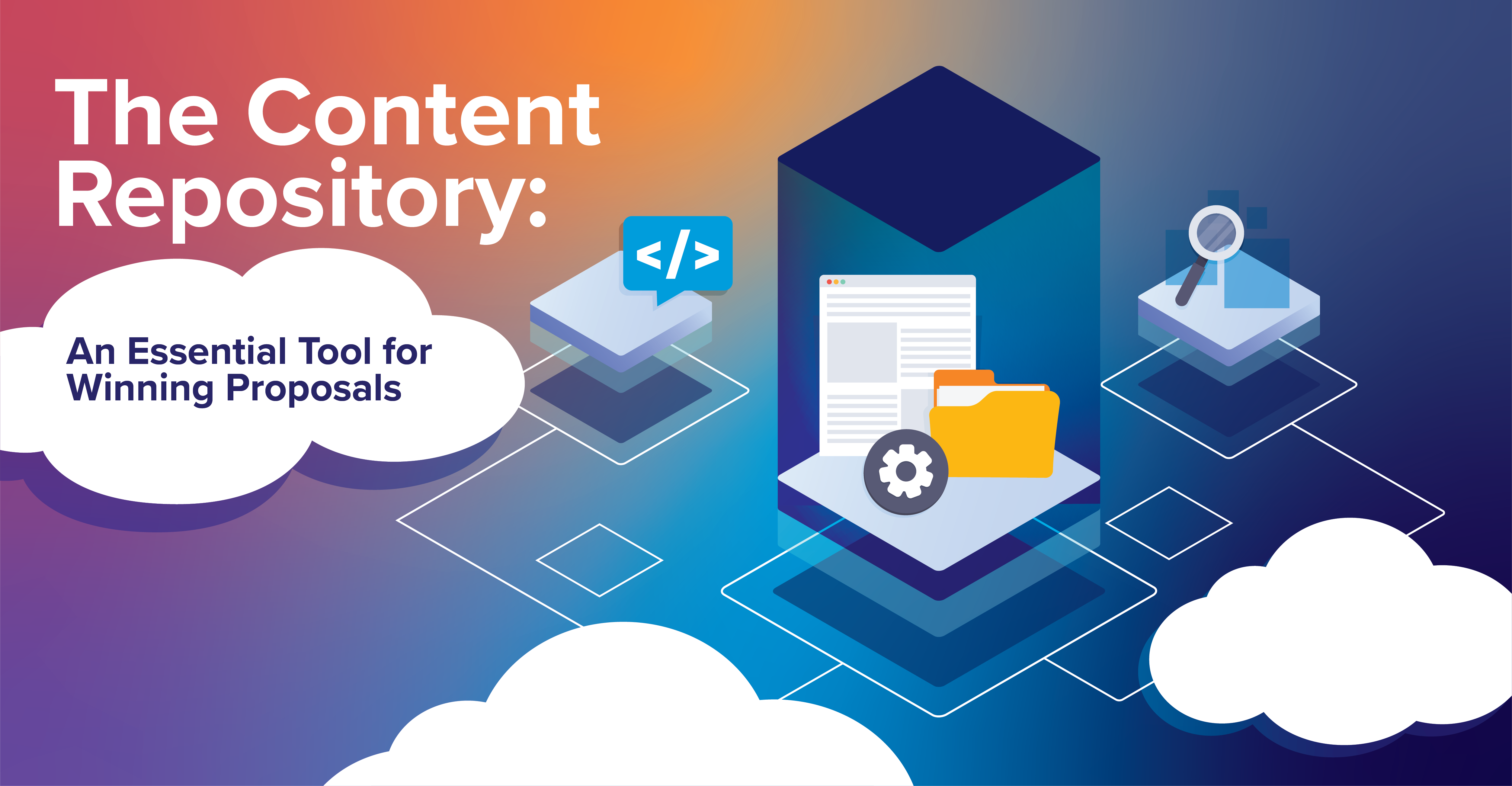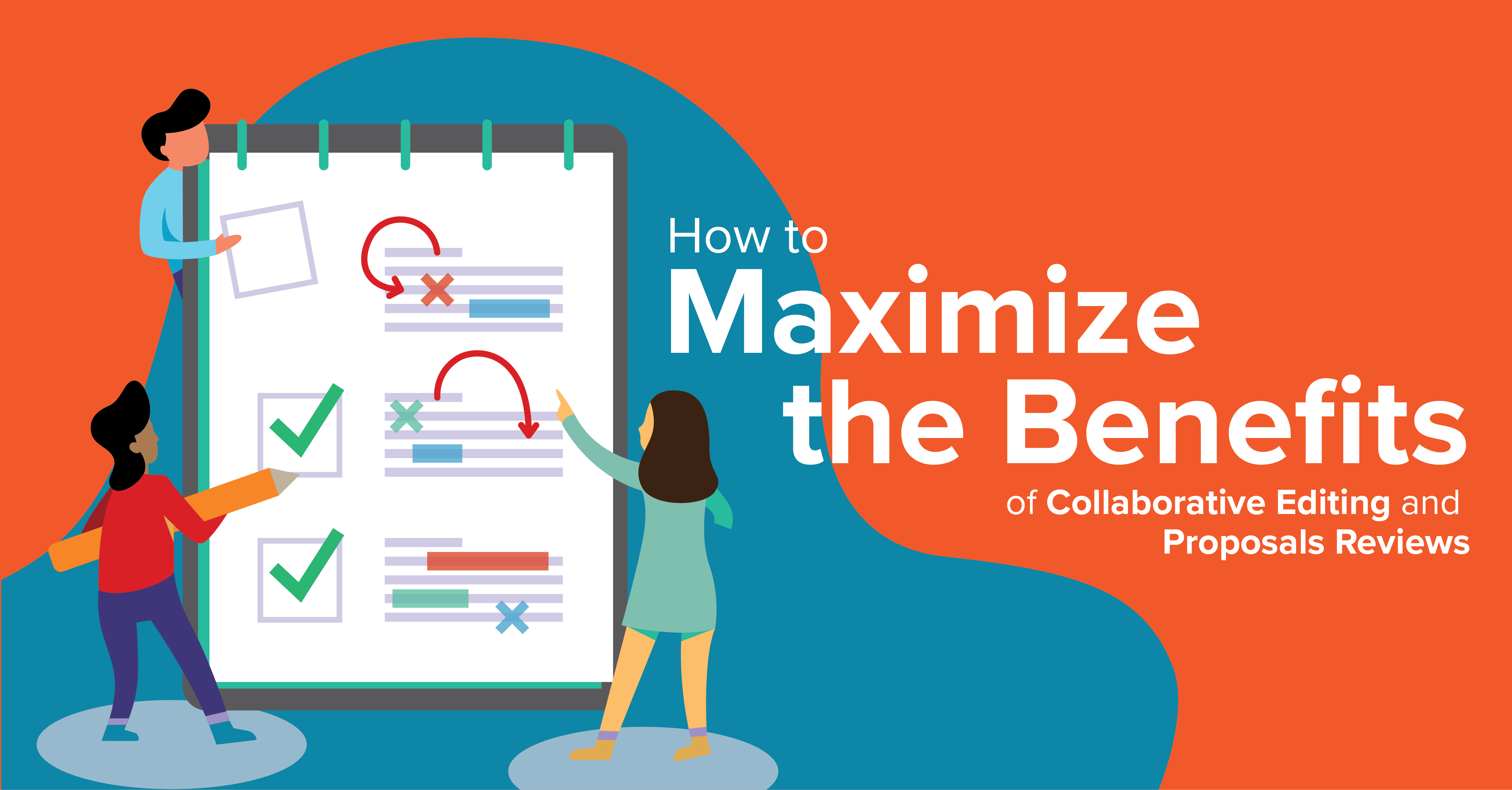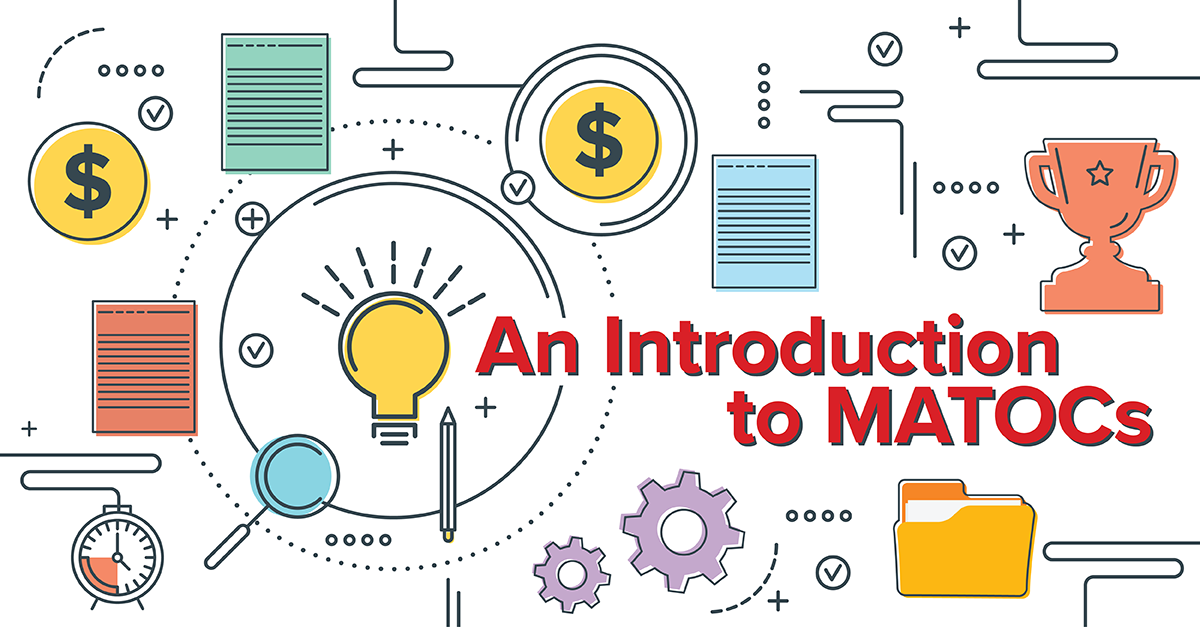
Within the world of U.S. Federal Government Contracting, it is easy to become overwhelmed with all the acronyms. One acronym you might have been wondering about lately is MATOC.
In this article, we'll break down the definition of a MATOC, its appeal to the government, how to win a spot on this contract vehicle, and what to do after you win.
What exactly is a MATOC?
MATOC stands for Multiple Award Task Order Contract, and a MATOC is simply a special type of Indefinite Delivery Indefinite Quantity (IDIQ) contract with multiple awardees.
IDIQ contracts serve as vehicles under which contract holders bid on and may be awarded multiple future contracts. These future contracts are called task orders for services and delivery orders for products. When the Government awards an IDIQ, it does not know how much of a specific product or service it will need over a defined period of time.
Accordingly, the IDIQ contract vehicle provides the Government with the flexibility to order as much—or as little—of the products and/or services it ends up needing over the life of the contract, so as long as those amounts are within the pre-negotiated minimums and maximums (see Federal Acquisition Regulation (FAR) 16.504).
Under a MATOC, multiple awardees are chosen to provide services within a pre-defined dollar amount. Awardees consist of a pool of contractors who compete for subsequent task orders or delivery orders. The FAR indicates a preference for MATOCs over Single Award Task Order Contracts (SATOCs) because MATOCs provide an additional layer of competition for the task order or delivery order awards (see FAR 16.504(c)). MATOCs are commonly used by the military for acquiring facility design, construction, and maintenance services.
How Much Does the Government Actually Use IDIQs and Multiple Award Contracts?
Federal Government spending is at an all-time high. According to Daniel Snyder from Bloomberg Government, Federal contract spending in fiscal year 2020 reached $681B, the highest amount on record. That’s a 43% increase from the $478B in government spending obligations in fiscal year 2016.
And the numbers are similarly impressive for multiple award contracts. A May 2019 report by Bloomberg Government showed government-wide spending on multiple award contracts increased from $118B in fiscal year 2017 to $132B in fiscal year 2018. Interestingly, between 2013 and 2018, of new IT task order awards, the Federal Government obligated $165B across 352,000 task orders. During this same time period, of new Professional Services task order awards, the Federal Government obligated $91B on roughly 96,000 task orders.
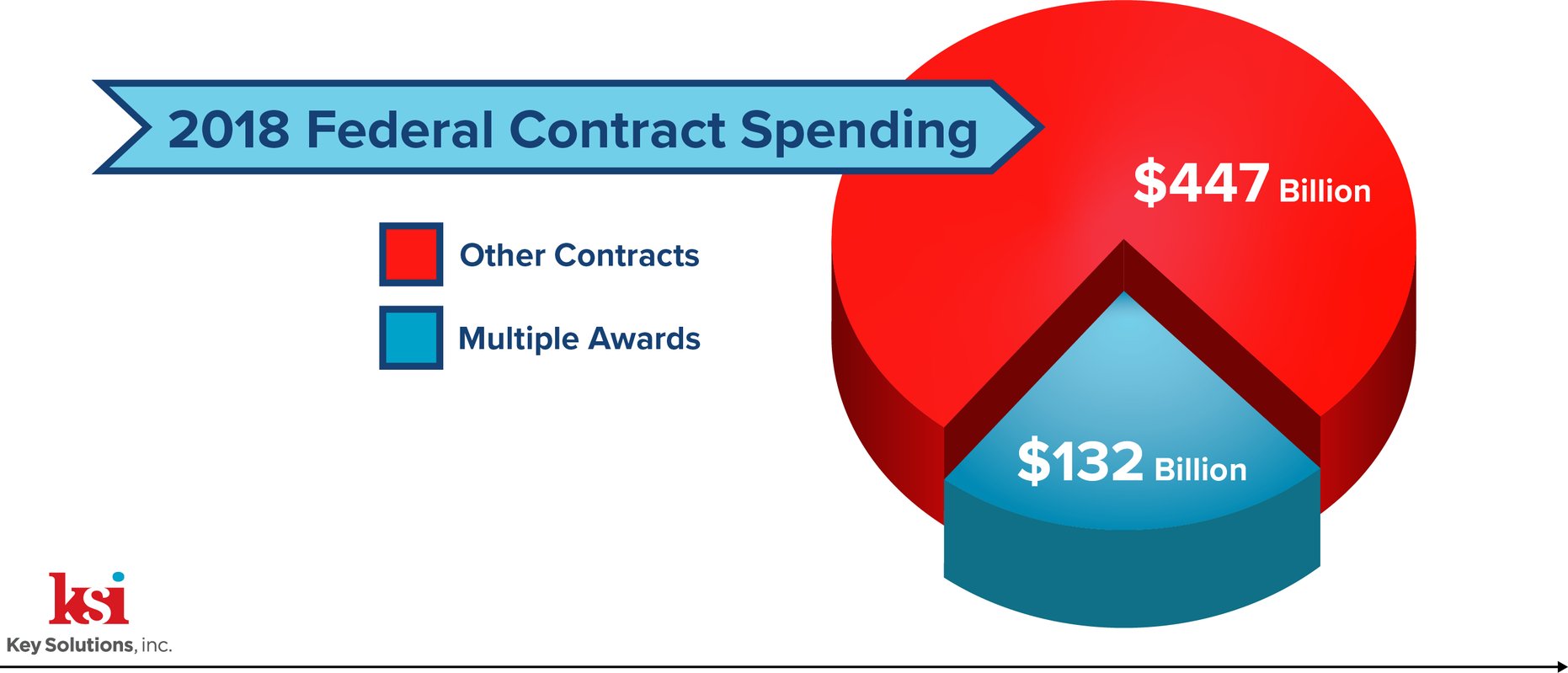
Why are MATOCs Appealing?
Multiple award contracts are appealing to the Government because they create a smaller, down-selected pool of contractors from which to solicit work via task orders or delivery orders. For this same reason, winning these multiple award contracts are appealing to contractors.
These vehicles reduce the number of possible competitors, which increases your odds of winning from the start. This down-selected pool also helps to pre-focus your competitive analysis activities.
How Do You Win a Seat at the Table?
The key thing to remember about MATOCs is that you need to secure the vehicle before you can compete for the subsequent task orders. Most MATOCs have a period of performance of five to ten years, so it’s critical to identify your must-win MATOCs well in advance of the solicitation release. Meet with the customer to understand their goals with the contract, their potential acquisition strategy, and any issues and hot buttons they may have related to the work.
Understand any of your company’s capability gaps, and if allowable under the procurement, form a team to address those gaps in your proposal. When forming your team, also consider whether any small business goals will be required under the contract. Use these capture activities to develop a solid overall solution and proposal plan.
Once the RFP is released, respond to the solicitation just as you would any other large RFP. Focus first on compliance and then weave in the necessary proof points and details to present a compelling and winning proposal. Make time for iterative reviews and ensure your price is on point. Invest the right time and resources to put your very best foot forward as your next chance to secure a seat at the table might not be for five or ten more years!
You’ve Won a MATOC, What Next?
Winning the MATOC is just the first step. How often do we see companies spending good time and money on winning a MATOC vehicle but then fall flat on the task order responses? This is why setting up a solid response process is so critical. But where do you start?
Establishing an Effective Task Order Response Process
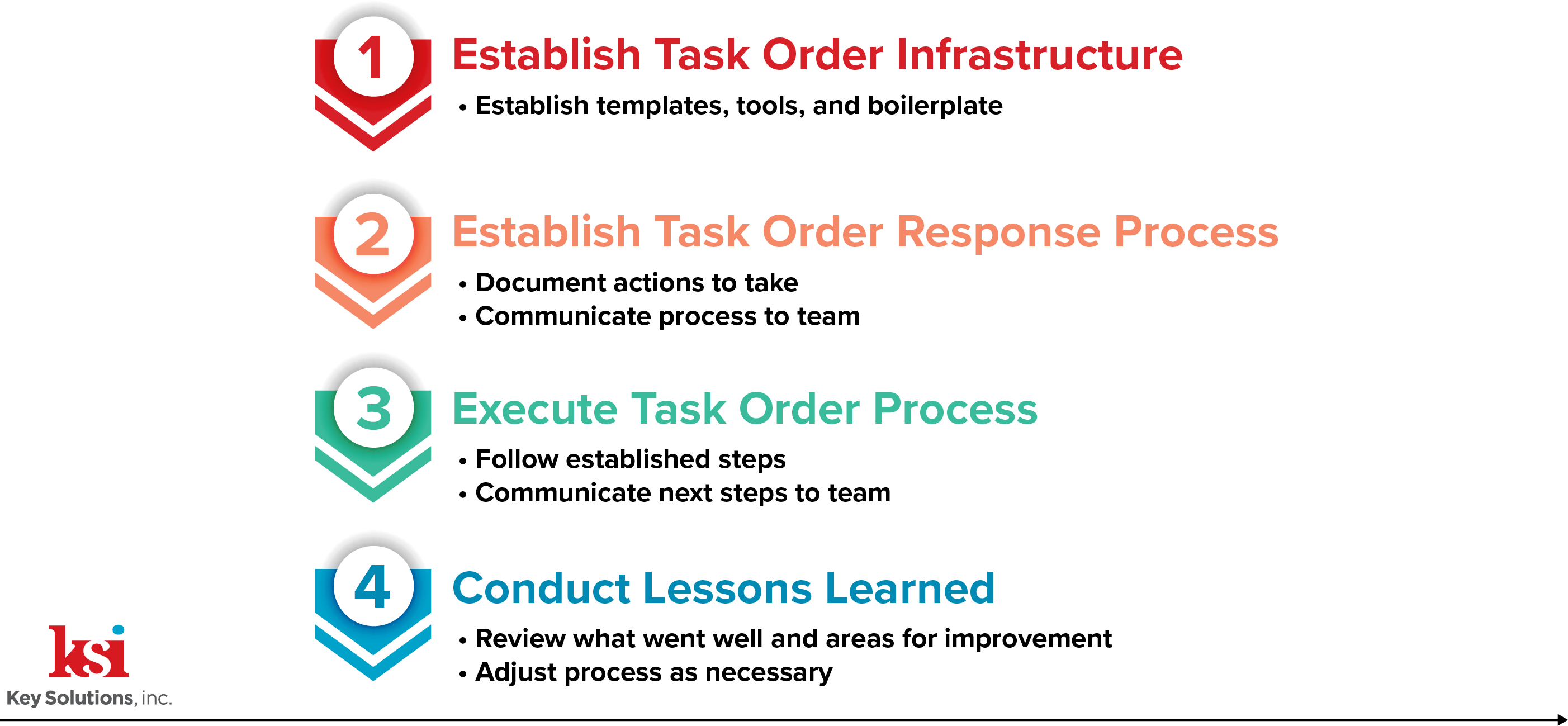
- First, you’ll need to set up a task order response infrastructure—you’ll need to establish the templates, tools, and boilerplate necessary to respond.
- Next, you’ll need to establish a task order response process—you’ll need to document predefined actions to take once a task order opportunity is identified. Once the process is documented, you’ll need to communicate the process to the team. Conduct training sessions to help ensure that key process elements are understood by everyone involved.
- Next, you’ll need to execute your task order process.
- Then after each task order response, you’ll want to conduct lessons learned and adjust your process as needed.
1. Establish the Task Order Infrastructure
The typical task order turnaround is 10 days, so it’s critical that you set up the necessary infrastructure to support an agile response process. When setting up your task order response infrastructure, the first thing you’ll need to do is establish your forecasting and capture function.
Understanding when the task orders are expected to be released will help you to prepare for the response in advance and prevent the mad scramble that so many companies have become accustomed to. Once you have the task order pipeline established, you’ll want to review the pipeline regularly with your team. Identify the must-win task orders and focus your capture efforts on those targeted opportunities.
Next, you’ll want to establish your response hierarchy within your proposal management tool, for example, SharePoint, Privia, or Virtual Proposal Center. One best practice to follow is to create the main workspace for each IDIQ with sub-workspaces for each task order response.
At the IDIQ level, you’ll want to include key resources, including the IDIQ Contract, the IDIQ proposal, sample past performance write-ups, boilerplate sections, task order templates, and sample graphics. For each task order response workspace, you’ll want to include folders organized to support your task order response process.
These folders include Solicitation Documents, Reference Materials, Capture Management, Proposal Management, Working Drafts, Review Files, Production, Graphics, and Final Submitted Files. Your response library should include key proposal management resources within the Proposal Management folder. These include sample schedules for common response turnarounds (5-day, 10-day, 20-day, and 30-days), questions templates, points of contact lists, compliance matrix templates, review templates, and blank task order templates.
IDIQ Response Hierarchy
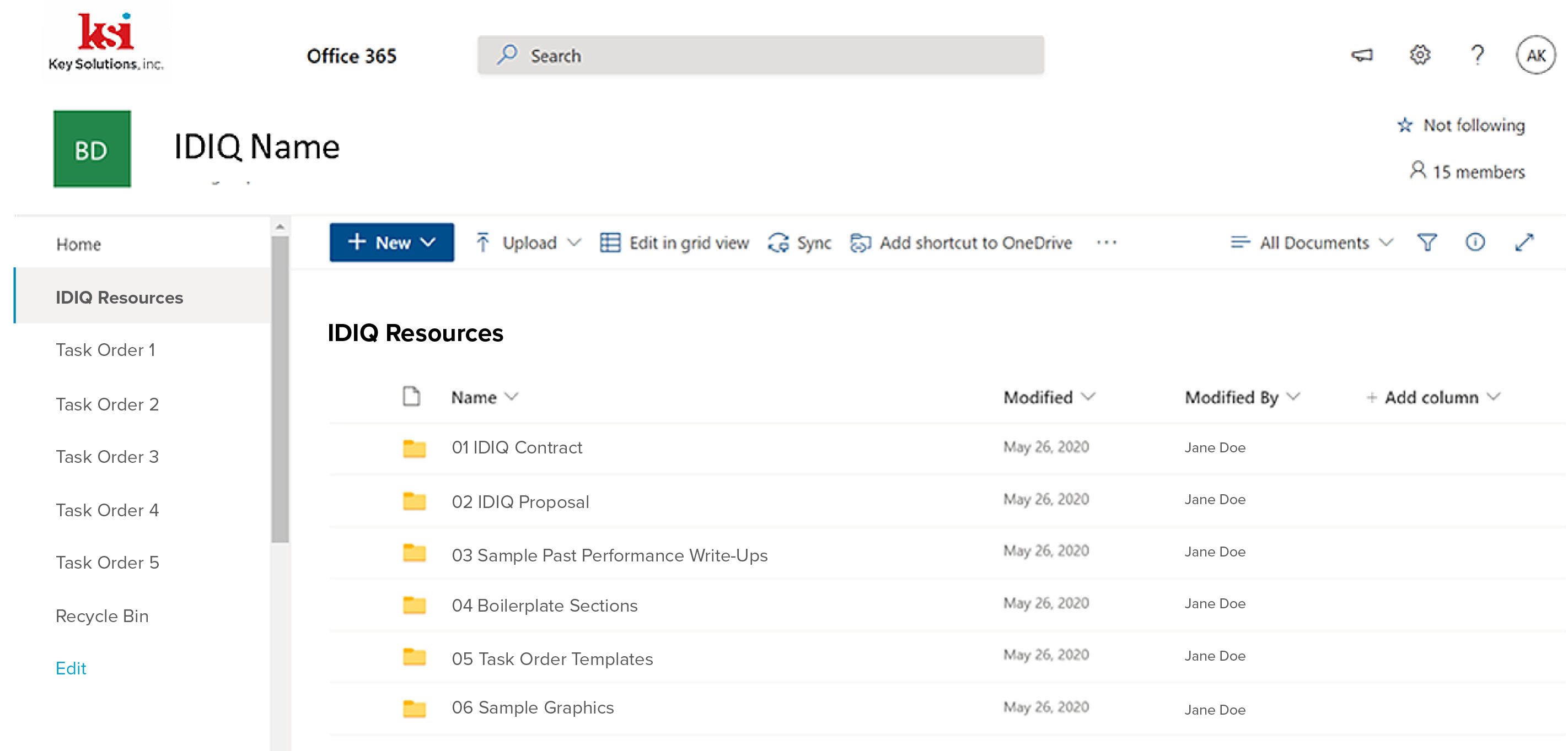 Example One: Main IDIQ Workspace with Sub-Workspaces for Each Task Order Response
Example One: Main IDIQ Workspace with Sub-Workspaces for Each Task Order Response
 Example Two: Task Order Sub-Workspace
Example Two: Task Order Sub-Workspace
Set Up Your Templates. Because the format requirements generally remain consistent from task order to task order, having pre-set task order templates ready before the RFPs drop will save you so much time. Your templates should include editable covers with placeholders for required information, editable headers and footers also with placeholders for required information, as well as built-in styles set to meet common task order RFP requirements. At a minimum, set these built-in styles for headings, body text, bullets, table text, table bullets, figure titles, and action captions.
To further streamline your task order templates, I recommend pre-outfitting the templates with headings mapped to the most common task order requirements. Under each major requirement, drop in boilerplate that can be adjusted quickly with find and replace. Also, include editable callout boxes as reminders for your team to add in relevant proof points and success stories. Additionally, make sure you include placeholders for common graphics, including organization charts, quality graphics, process flowcharts, risk matrices, and schedules.
Establish a Solid Boilerplate. You’ll also want to include boilerplate or reuse sections in your response library. These should be specific to the typical task order requirements, but will likely include cover letters, executive summaries, corporate capabilities, past performance write-ups, management plans and/or approaches, subcontracting plan and approach, technical approaches, and pricing approaches.
For each of these areas, include content commonly asked for in the task order RFPs. For example:
- For past performance, you’ll also want to maintain an up-to-date list of internal and external points of contact, including project managers, technical points of contact, and customer points of contact.
- Your management plan and/or approach might contain reuse content related to your project organization, transition approach, staffing approach, quality approach, safety measures, risk mitigation and management, schedule management, and cost controls.
- For pricing, you might include your cost accounting systems and standards, descriptions of your purchasing systems, descriptions of your estimating systems and procedures, DCAA and DCMA POCs and audit results, and any forward pricing rate agreements you may have in place.
Having strong boilerplate available will help you to respond to task orders more efficiently because the baseline content is already complete. To facilitate even faster responses, include the most common boilerplate directly in the templates and other less common reference material as content to be inserted as required.
I recommend leaving customer names out of your boilerplate to reduce the chances of accidentally leaving the wrong customer name in your task order response. Instead, replace customer names with the highlighted word <CUSTOMER> in all caps with carats. This will facilitate easy find and replace and help prevent incorrectly replacing generic references to customers.
Mad Lib Style Theme Statements. It is also helpful to include mad lib-like theme statements for your major sections. For example, in your transition section, you might include the following:
To support a successful and low risk transition for <CUSTOMER>, our Transition Manager brings <X> years of experience transitioning projects of similar size, scope, and complexity to <TASK ORDER NAME>. This includes successfully transitioning more than <X> personnel onto the <$X> million contract name in fewer than <X days/weeks/months>.
Proof Points List. In addition to maintaining narratives that can be tailored for each task order, it’s also helpful to keep a list of relevant proof points and facts that can be dropped into boilerplate to quickly tailor the content based on the project type and customer. Some examples of recommended proof points include:
- Years of experience supporting common customers
- Years of experience delivering common services
- Number of facilities
- Number of staff in common labor categories
- Number of cleared staff (if applicable)
It’s also helpful to maintain some short past performance vignettes demonstrating transition successes, staffing ramp-ups, transformation success stories, and successful implementations.
2. Establish Your Response Process
Once you have your infrastructure in place, you’ll want to establish an easy-to-follow response process. This process should include task order capture activities, task order RFP distribution and review, the bid/no-bid decision, resource assignments, shell document development (i.e., adjusting the baseline template based on task order RFP-specific requirements), questions collection and submission, draft development, review cycles, editing and finalization, and proposal submission.
Generating a simple checklist with roles and responsibilities can help make sure your team never misses a beat. Additionally, it is helpful to establish and maintain a master schedule with all the task order deadlines and milestones. This will mitigate resource conflicts and help you successfully manage multiple task orders.
3. Execute Your Response Process
It’s one thing to establish your process, but it’s another thing entirely to execute the process. Once you have firmed up your process, it’s critical that you distribute the process documents to the team. Additionally, keep them electronically in a central location that everyone can find and access.
Then, you should hold training sessions as early as possible with your team. During the training, walk through the response process, review roles and responsibilities, and demonstrate how to use the proposal site.
You should review the site structure, version control measures, boilerplate availability, as well as the process for updating boilerplate content. Be prepared to execute just-in-time refresher training as well or for new team members as needed. It’s also helpful to communicate next steps throughout the task order response process so that the team can easily stay on track.
4. Conduct Lessons Learned and Adjust Your Process as Necessary
After each submission, conduct a brief lessons learned session. Additionally, win or lose, you’ll want to request a debrief from the Government. This will enable you to gather trends on things you’re doing well, as well as things that need improvement. If you notice the same issue repeating itself during each response, then you may need to adjust the process to mitigate that problem for future submissions.
For example, if you’re consistently losing on price, identify gaps in your capture processes as well as areas you can generally become leaner in your pricing. If your response lacks customer understanding, there may be gaps in your capture process, knowledge transfer, and/or bid-decision process. If non-compliances are noted, you may need to examine and adjust your outlining practices, writing process, review processes, and/or boilerplate content.
Final Thoughts
Remember, winning the MATOC is only the first step. You’ll need to establish a successful task order machine to start winning those task orders.
- First, you should plan, capture, and prepare. This will support stronger task order content and faster turnarounds.
- Second, establish a task order response process. As part of this process, generating a simple checklist with roles and responsibilities can help set your team up for success. This will support more effective and efficient task order responses.
- Third, make sure you communicate roles, responsibilities, and expectations. This understanding of accountability will help ensure the process goes smoothly.
- Fourth, maintain a master schedule with all the task order deadlines and milestones. This will mitigate resource conflicts and help you successfully manage multiple task orders.
- Fifth, focus on and prioritize the must-win task orders. By focusing on strategic opportunities rather than simply playing a numbers game, you increase your win probably on the targeted efforts and should see an overall improved win rate across the task orders.
- Finally, conduct internal lessons learned and request debriefs, win or lose. As necessary, adjust your process to mitigate future issues.
By following these steps to establish and execute an agile response process, you’ll help guide your team to respond to the right, targeted opportunities effectively and efficiently.


